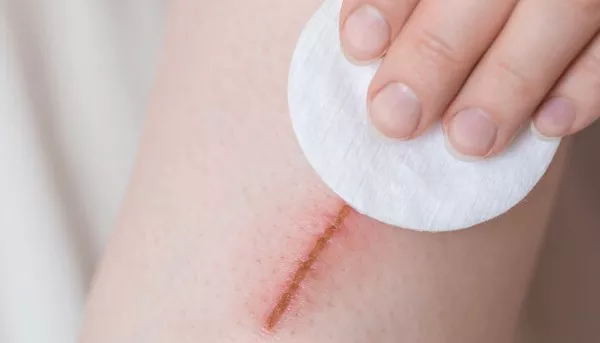Keloids, those raised, often itchy, and occasionally painful scars that can develop at piercing sites, can be a source of distress for many individuals. These hypertrophic growths of scar tissue can not only be aesthetically unpleasing but also cause discomfort. Fortunately, there are various home remedies that can help in managing keloids on piercings. In this comprehensive guide, we will delve into the causes, symptoms, and, most importantly, effective home remedies for keloids, with a specific focus on keloids stemming from piercings.
Understanding Keloids: What Are They?
Keloids are an overgrowth of fibrous tissue that can occur at the site of an injury, including piercings. They result from an abnormal healing process where the body continues to produce collagen, leading to a raised, often larger-than-expected scar. These pesky protrusions are not only cosmetically troubling but can also cause itching, pain, and discomfort, making their management crucial.
The Role of Genetics in Keloid Formation
Genetics plays a significant role in determining whether an individual is prone to keloid formation. If you have a family history of keloids, your risk is considerably higher. However, anyone can develop keloids, particularly if the piercing is not cared for properly or if it becomes infected.
Symptoms and Complications of Keloids on Piercings
Keloids can manifest as raised, shiny, and red or purple growths on or around a piercing. These growths may continue to enlarge over time. Symptoms associated with keloids on piercings include itching, tenderness, and even pain. If left unaddressed, they can lead to complications such as infection, restricted movement, and emotional distress due to their appearance.
Home Remedies for Keloids on Piercings: What Works?
While keloids can be challenging to treat, especially at home, there are several remedies and strategies that may help manage their appearance and symptoms. Remember that results may vary, and it’s crucial to be patient and consistent in your approach.
1. Silicone Gel Sheeting
Silicone gel sheets have shown promise in reducing the size and appearance of keloids. These sheets are placed directly on the keloid and work by hydrating and flattening the scar tissue. Consistency is key, and you may need to apply them for several months to see results.
2. Onion Extract
Onion extract is rich in compounds that have been shown to improve the appearance of scars, including keloids. You can find onion extract-based creams or gels at most drugstores. Applying these products to your keloid daily may help reduce its size and redness over time.
3. Massage Therapy
Gentle massage of the keloid can help break down excess collagen and improve blood circulation to the area. Use a moisturizing cream or oil and apply gentle pressure while massaging the keloid for several minutes each day.
4. Lemon Juice
Lemon juice is a natural source of alpha hydroxy acids (AHAs), which can help exfoliate the skin and improve the appearance of scars. Apply freshly squeezed lemon juice to the keloid and leave it on for about 20 minutes before rinsing it off with warm water. Be cautious if you have sensitive skin, as lemon juice can cause irritation.
5. Aloe Vera Gel
Aloe vera is well-known for its skin-soothing properties. Applying aloe vera gel to the keloid can help reduce inflammation and promote healing. Use pure aloe vera gel or look for products that contain a high percentage of aloe vera.
6. Tea Tree Oil
Tea tree oil has antimicrobial properties that can help prevent infection in keloids, which is essential for their management. Dilute tea tree oil with a carrier oil, such as coconut oil, and apply it to the keloid twice daily.
7. Pressure Therapy
Pressure therapy involves applying constant pressure to the keloid using specialized devices or bandages. This method can help flatten keloids over time but may require consistent use for several months.
8. Honey
Honey has natural healing properties and can be used as a topical treatment for keloids. Apply a thin layer of honey to the keloid and cover it with a bandage. Leave it on for several hours or overnight, then rinse it off with warm water.
9. Baking Soda
Baking soda, when mixed with water to form a paste, can be applied to the keloid to exfoliate and soften the scar tissue. Gently massage the paste into the keloid, rinse it off, and pat the area dry.
10. Avoiding Irritants
To prevent further irritation and potential exacerbation of keloids, avoid using products that contain harsh chemicals or allergens near the piercing site. This includes perfumes, certain soaps, and alcohol-based cleansers.
11. Hydration and Nutrition
Maintaining overall skin health through proper hydration and nutrition can aid in the management of keloids. Drink plenty of water and consume a balanced diet rich in vitamins and antioxidants to support skin healing.
12. Consultation with a Healthcare Professional
While home remedies can be effective in managing keloids, it’s essential to consult with a healthcare professional, such as a dermatologist, for a comprehensive evaluation and personalized treatment plan. They may recommend advanced treatments such as corticosteroid injections, laser therapy, or surgical excision if home remedies prove ineffective.
Preventing Keloids on Piercings
Prevention is always better than cure. If you’re considering getting a piercing and are concerned about keloids, there are steps you can take to minimize your risk:
Choose a Professional Piercer: Ensure that your piercing is done by a trained and experienced professional who follows proper hygiene and sterilization procedures.
Follow Aftercare Instructions: Carefully follow the aftercare instructions provided by your piercer. This includes cleaning the piercing with a saline solution and avoiding touching it with dirty hands.
Avoid Excessive Movement: Avoid twisting or turning the jewelry in your piercing unnecessarily, as this can lead to irritation and keloid formation.
Monitor for Infection: Keep an eye out for signs of infection, such as redness, swelling, and discharge. If you suspect an infection, seek prompt medical attention.
Wear Hypoallergenic Jewelry: Choose hypoallergenic jewelry made from materials like surgical stainless steel or titanium to reduce the risk of allergic reactions that can trigger keloid formation.
Conclusion
Managing keloids on piercings can be a challenging and time-consuming process, but with the right approach and consistent care, it’s possible to reduce their size and appearance. Remember that results may vary from person to person, and it’s crucial to consult with a healthcare professional if your keloids are causing significant discomfort or if home remedies prove ineffective. Ultimately, patience and persistence are key when dealing with keloids, and a combination of home remedies and professional guidance can help you on your journey to smoother, healthier skin.
Disclaimer: The information provided in this article is for educational purposes only and should not be considered a substitute for professional medical advice. Always consult with a healthcare provider for a proper evaluation and treatment plan for keloids or any other medical condition.
[inline_related_posts title=”You Might Be Interested In” title_align=”left” style=”list” number=”6″ align=”none” ids=”2344,2276,2414″ by=”categories” orderby=”rand” order=”DESC” hide_thumb=”no” thumb_right=”no” views=”no” date=”yes” grid_columns=”2″ post_type=”” tax=””]


































